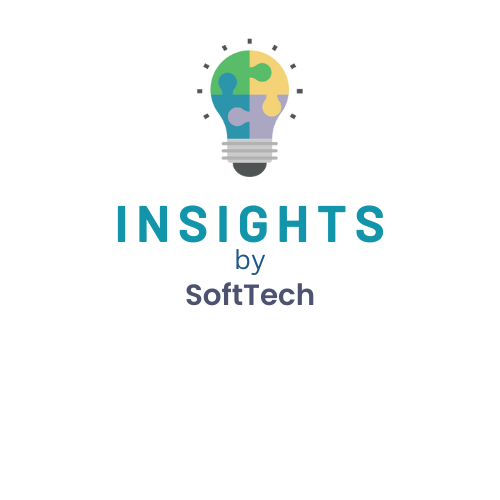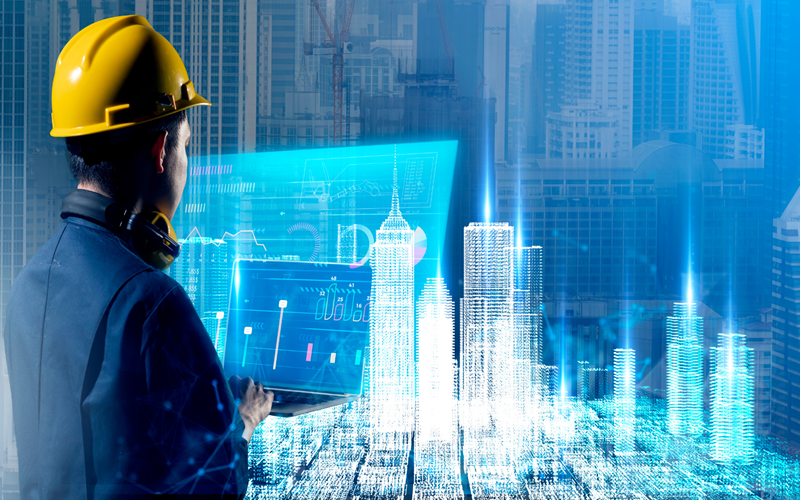Last Updated on November 23, 2023 by softtech
Executive Summary
As cities worldwide confront the challenges of urbanization and climate change, the pursuit of sustainability and the goal of achieving net-zero carbon emissions have become paramount. This white paper delves into the pivotal role of digital twin technology in the realization of sustainable urban planning and design, a cornerstone in the development of net-zero cities. By offering an extensive exploration of digital twins and their applications in construction and urban development, this paper outlines how these technologies can facilitate the creation of efficient, eco-friendly urban environments.
Table of Contents
Introduction
Understanding Digital Twins
2.1 Definition
2.2 Key Components
2.3 Data Sources
The Role of Digital Twins in Sustainable Urban Planning
3.1 Predictive Modeling
3.2 Real-Time Monitoring
3.3 Decision Support
Leveraging Construction Technology for Digital Twins
4.1 Building Information Modeling (BIM)
4.2 Internet of Things (IoT)
4.3 Remote Sensing
Use Cases
5.1 Smart Grids and Energy Management
5.2 Transportation and Traffic Management
5.3 Water Resource Management
Challenges and Considerations
6.1 Data Privacy and Security
6.2 Interoperability
6.3 Scalability
Future Outlook
1. Introduction
The rapid growth of urban populations combined with escalating environmental concerns have precipitated an urgent need for cities to undergo transformation, reducing their carbon footprints while enhancing overall sustainability. This transformation hinges on reimagining the conventional approaches to urban planning and design, with a primary catalyst being the digital twin.
2. Understanding Digital Twins
2.1 Definition
A digital twin serves as a virtual replica of a physical entity or system, enabling real-time monitoring, analysis, and prediction. Within the scope of urban planning, digital twins create comprehensive models of entire cities, empowering planners to make data-informed decisions and optimize resource allocation.
2.2 Key Components
Digital twins consist of three fundamental elements: the physical entity, the digital representation, and the connection that binds them. The digital twin integrates data from a wide array of sources, including sensors, remote sensing technologies, and public records, to create a comprehensive model of the city.
Digital Twin Components
2.3 Data Sources
Digital twins draw upon a diverse range of data sources, including satellite imagery, social media data, IoT sensors, and historical records. This data amalgamation results in a highly precise and detailed representation of the city and its infrastructure.
3. The Role of Digital Twins in Sustainable Urban Planning
3.1 Predictive Modeling
Digital twins empower predictive modeling, enabling planners to simulate the consequences of various design and policy changes on a city’s sustainability. This capability is vital for optimizing energy consumption, transportation networks, and resource utilization.
3.2 Real-Time Monitoring
Real-time data feeds from IoT devices and sensors offer constant monitoring of infrastructure and environmental conditions. This monitoring capability facilitates immediate response to issues, thereby reducing energy waste and resource consumption.
3.3 Decision Support
Digital twins furnish decision-makers with tools to make informed choices regarding sustainable urban development. By presenting data visually in a comprehensible manner, they enable more effective allocation of resources and the implementation of eco-friendly policies.
4. Leveraging Construction Technology for Digital Twins
4.1 Building Information Modeling (BIM)
BIM technology generates digital representations of building projects. The integration of BIM with digital twins enables the seamless transition of construction data into the urban planning phase, enhancing accuracy and efficiency.
4.2 Internet of Things (IoT)
IoT sensors deliver real-time data on various aspects of urban life, including traffic, air quality, and energy consumption. These sensors play a pivotal role in creating and sustaining an up-to-date digital twin.
4.3 Remote Sensing
Satellites, drones, and other remote sensing technologies capture high-resolution images and data, facilitating precise modeling and monitoring of urban areas.
5. Use Cases
5.1 Smart Grids and Energy Management
Digital twins have been instrumental in optimizing energy grids, ensuring the efficient and sustainable distribution of energy, thereby minimizing waste and carbon emissions.
5.2 Transportation and Traffic Management
Digital twins allow for real-time traffic monitoring, resulting in improved traffic flow, reduced congestion, and lower emissions from idling vehicles.
5.3 Water Resource Management
Digital twins aid in the effective management of water resources, reducing water wastage and the environmental impact of water treatment facilities.
6. Challenges and Considerations
6.1 Data Privacy and Security
Safeguarding the sensitive data employed by digital twins is of paramount importance. Robust cybersecurity measures must be in place to ensure data integrity and protect privacy.
6.2 Interoperability
Digital twins rely on data from various sources and systems, making interoperability a challenge. Standardization and open data platforms can help address this issue.
6.3 Scalability
As cities expand, digital twin models must scale accordingly. Planning for scalability is essential to accommodate future urban growth.
7. Future Outlook
The future of digital twin technology in sustainable urban planning is promising. The integration of AI and machine learning will further enhance predictive modeling and decision-making capabilities. Moreover, emerging technologies such as 5G will enable even faster data processing and communication, making real-time monitoring and data-driven decision-making more accessible.
Digital twin technology offers a promising pathway to achieving net-zero cities by enhancing sustainable urban planning and design. By leveraging construction technology, real-time data, and predictive modeling, cities can work towards minimizing their environmental impact and creating a brighter, greener future for all.
About the Author

Global Head – Digital Twin & Allied Services
M/s. SoftTech Engineers Ltd., Pune
Empowering Digital Transformation of Built Environment
Co-Founder & COO,
M/s. Qi Square Pte Ltd., Singapore
BtrLyf – A Digital Built Environment Ecosystem,
Promoting Energy Efficiency, Sustainability & Green Environment
Co-Founder & Director,
M/s. Electro-Mech Consultants Pvt. Ltd. (EMCPL), Mumbai
President – FSAI Mumbai Chapter – SY 2021-23 & 2023-24
President – ASHRAE Mumbai Chapter – SY 2021-22
President – INBAC Mumbai Chapter – SY 2023-24
Sub Region Chair – ASHRAE RAL – SY 2023-24
Mr. Rupesh Umtol is leading group of engineers/professionals who are specialized in Digital Twin – Virtual Environment Domain for Energy Efficiency, Net Zero Buildings, Green Building Certifications LEEDs, Building Modeling & Dynamic Simulation for improving the Building Design & Potential Power Savings for Achieving Energy Efficiency in New as well as Existing buildings for RCx & RFx measures.
Being an Engineering Design Consultant & Sustainability Specialist for more than two decades, He is wholeheartedly committed to Sustainability and Climate Responsive Designs with an extensive analytical knowledge of building energy performance and resource conservation strategies for projects in INDIA, SINGAPORE, HONG KONG, MALAYSIA, UAE & Other Gulf & East Asian Countries.
Mr. Rupesh is serving ASHRAE as Sub Region Chair at Region at Large.

